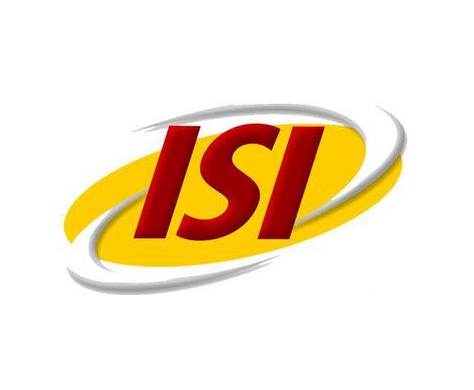دانلود رایگان مقاله لاتین استراتژی کسب و کار از سایت الزویر
عنوان فارسی مقاله:
سازگاری بین مدل کسب و کار و استراتژی کسب و کار و کمک به عملکرد: شواهد تجربی از سرمایه گذاری ICT تونس
عنوان انگلیسی مقاله:
Alignment between business model and business strategy and contribution to the performance: Empirical evidence from ICT Tunisian venture.
سال انتشار : 2015

برای دانلود رایگان مقاله استراتژی کسب و کار اینجا کلیک نمایید.
بخشی از مقاله انگلیسی:
2. Literature review
The issue of the impact of the business model on organizational performance is still largely unexplored theme. The business model allows the ICT ventures to be competitive on the market (Casadesus & Ricart, 2010). It thus represents a potential source of competitive advantage (Markides & Charitou, 2004). According to Afuah and Tucci (2001), the business model can explain the performance and competitive advantage through the best combination of resources to create value for the consumer and have a profitable income. To our knowledge, only Zott and Amit (2007) rigorously explored the impact of the business model on performance. They located the business model at the intersection of the theory of entrepreneurship, the theory of transaction costs, and the strategy and showed that the business model influences the performance when focused on innovation and efficiency. The business model proposed has two themes: business model innovation: it is to create value by using new ways to drive economic exchanges for stakeholders (new transaction mechanisms, connecting with prospects, business model innovation, operating benefits); business model efficiency: it is the actions that can take the ICT ventures to complete its transactions with efficiency, that is to say, by reducing transaction costs and creating substantial value (reduce existing transaction costs for the central firm and its partners, reduce the complexity of transactions, reduce uncertainty and information asymmetry by increasing transparency, and reduce the risk of transaction). The theory of transaction costs is the basis of this factor (Williamson, 1975). The results show that the first business model focused on innovation and efficiency product strategy and market are a separate built, they are in fact complementary rather than substitutable. A second result says the hypothesis that the two concepts influence the performance of the firm. This complementary refers to the need to review the business model of the firm as a source of competitive advantage. Another significant result ensures that the business model is centered on innovation and is combined with the differentiation strategy, cost leadership, and focus more the firms performing. So we notice the contingent role of the business model for the determination of the market value. Patzelt, Knyphausen-Aufseb, and Nikol (2008) used the business model as a moderating variable affecting the relationship between top management team composition and performance. Similarly, Giesen, Berman, Bell, and Blitz (2007) suggest three ways to innovate the business model: the industry model, revenue model, and business model. This proposal was confirmed through a case study of 35 companies. The results show that these models are performing. A recent study that of Brettel, Strese, and Flatten (2012) examined the relationship between the business model and performance by integrating relationship marketing as a moderating variable. They relied on conceptualizing Zott and Amit (2007). The model shows that entrepreneurs should focus on the relationship with their customers in the design of the business model. Contingent analysis provides a perspective that is very well suited to our study. Within the meaning of Weill and Olson (1989), on the one hand, this perspective is specifically adapted to study performance, and secondly, it requires simultaneous consideration of multiple variables for the study of performance. The concept of aligning its origins in contingency theory. Rather than seeking universal answers, we determine the conditions under which an organization is performing. This is from the work of Woodward (1958), which was formulated according to contingency theory, based on the idea that the efficiency of the organization is the result of the match between his situation and structure, or the consistency between the structural determinants and organizational variables. According to Miles and Snow (1984), the alignment is “a dynamic search for aligning the organization and its environment and adjust the internal resources of the firm to support this alignment.” At first, the alignment has been applied to strategy and relationship with structure (Chandler, 1962). He reveals that the fit between the choice of external positioning (strategy) and internal arrangements (structure) promotes performance. He suggested that the strategy must be positioned with the adaptation of different business functions. He defined the strategy as creating long-term objectives, the selection of courses of action that would achieve these objectives, and the deployment of resources to achieve these goals. It succinctly summarizes his arguments as “structure follows strategy.” Yin and Zajac (2004) call for the study of the alignment between strategy and structure with other forms of organization. Drawing on the work of Chandler, this research focuses on the study of the impact of co-alignment of strategy and business model (considered as a new structural form of organizations). The relationship between structure and strategy has been well validated in the literature
برای دانلود رایگان مقاله استراتژی کسب و کار اینجا کلیک نمایید.
کلمات کلیدی:
Business IT Alignment from Business Model to ... - Springer Link link.springer.com/chapter/10.1007/978-3-642-22056-2_2 by B Fritscher - 2011 - Cited by 32 - Related articles We then show how the proposed visualization based on enterprise architecture, with a strong focus on business model strategy, can help IT alignment, at both ... Business IT Alignment from Business Model to ... - ResearchGate https://www.researchgate.net/.../220921249_Business_IT_Alignment_from_Business_M... Key words: Business Model, IT Alignment, Enterprise Architecture,. ArchiMate ... Enterprise architecture describes components of an enterprise across domains. How Aligned Is Your Organization? - Harvard Business Review https://hbr.org/2017/02/how-aligned-is-your-organization Feb 7, 2017 - Most companies struggle with it. ... Maximizing economies of scale lies at the heart of McDonald's product-centric business model. .... own domains and components, rather than align and improve across the entire enterprise. A Visual Approach to Business IT Alignment between Business Model ... www.igi-global.com/article/...business...alignment-between-business-model.../123605 by B Fritscher - 2015 - Cited by 5 - Related articles A Visual Approach to Business IT Alignment between Business Model and Enterprise Architecture: 10.4018/ijismd.2015010101: In this paper, the authors put ... Business-IT alignment - Wikipedia https://en.wikipedia.org/wiki/Business-IT_alignment Business-IT alignment is a dynamic state in which a business organization is able to use ... An organization must rotate both IT and business professionals across ... also an organizational change management component (see the Risk3 model ... A Framework for Measuring the Alignment between Business Models ... resolver.tudelft.nl/uuid:2a4f7805-286f-4dfa-94f4-659874537398 by I Stoilov - 2013 - Related articles Aug 29, 2013 - Title. A Framework for Measuring the Alignment between Business Models and Business Processes in Software Development Companies.
